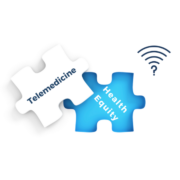Overcoming Known Disparities and Access for CLL Patients
For cancer patients, multiple studies have shown that there are some known barriers to equitable access to care. The overall clinical trials participation rate is only about 5 percent of adult cancer patients. Some of the disparities show lower clinical trial participation rates for adolescent and young patients, patients over age 65, women in non-sex-specific cancers, and patients who earn $50,000 or less annually. And though study results were somewhat mixed about whether participation rates have increased for Black, Indigenous, and People of Color (BIPOC) communities, it’s vital for BIPOC patients to increase their clinical trial participation rates as the percentages of BIPOC populations continue to rise in the overall U.S. population.

To increase CLL clinical trial participation for underrepresented groups, there are several strategies to improve rates. These strategies include:
- Starting discussions about clinical trials early in the patient journey, beginning with diagnosis and continuing to discuss throughout their testing process up until discussions start about treatment decisions.
- Making special efforts to connect adolescent CLL patients and female CLL patients with advocates targeted to their underrepresented age or gender to help patients feel more connected and trusting about clinical trials.
- Connecting non-native English speakers to translators early in their CLL journey to ensure patients understand clinical trial options.
- Continuing and extending reimbursement of food and transportation costs as part of clinical trial participation.
- CLL clinical trial participants sharing their experiences about clinical trials to increase education about trials.
- Patient advocacy websites and other resources including clinical trials as part of their foundational content for patients and caregivers.
- Continuing telemedicine as a viable option for initial entry into CLL clinical trials.
Educating CLL patients about clinical trials is an important piece of continuing effective clinical trials. If efforts can continue to reach CLL patients who are underrepresented in clinical trials, these efforts will help to improve care for CLL patients receiving care currently and for those who will need treatment years in the future. As researchers receive more data on the CLL treatments under study, CLL treatments will continue to be refined for subtypes and other factors for optimal CLL care and quality of life for each patient.
Packed with information including clinical trial goals, questions to ask about clinical trials, support resources, and much more, check out the CLL Clinical Trial Cornerstone Resource Directory.
Source
Joseph M. Unger, PhD, Elise Cook, MD, Eric Tai, MD, and Archie Bleyer, MD; The Role of Clinical Trial Participation in Cancer Research: Barriers, Evidence, and Strategies; ASCO Educational Book. https://ascopubs.org/doi/10.1200/EDBK_156686?url_ver=Z39.88-2003&rfr_id=ori%3Arid%3Acrossref.org&rfr_dat=cr_pub%3Dpubmed&






